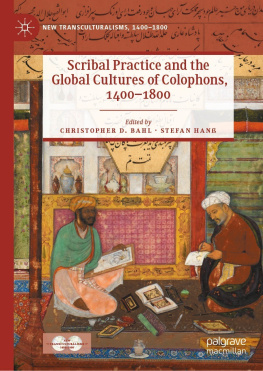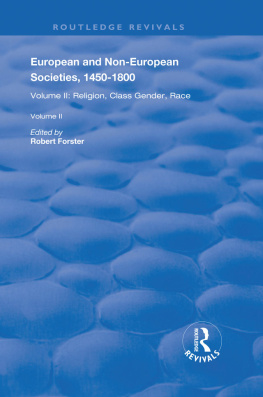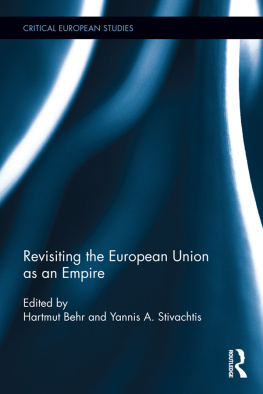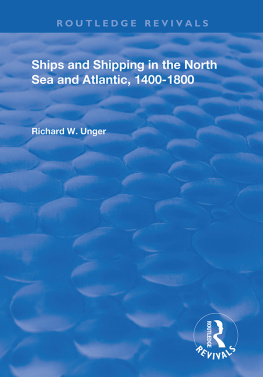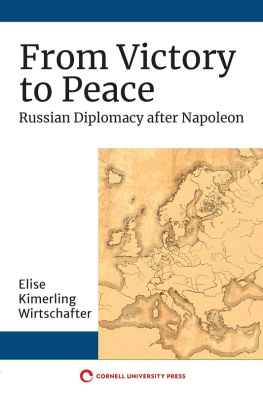
Revisiting Gender in European History, 14001800
Do women have a history? Did women have a renaissance? These were provocative questions when they were raised in the heyday of womens studies in the 1970s. But how relevant does gender remain to premodern history in the twenty-first century? This book considers this question in eight new case studies that span the European continent from 1400 to 1800. An introductory essay examines the category of gender in historiography and specifically within premodern historiography, as well as the issue of source material for historians of the period. The eight individual essays seek to examine gender in relation to emerging fields and theoretical considerations, as well as how premodern history contributes to traditional concepts and theories within womens and gender studies, such as patriarchy.
Elise M. Dermineur is Associate Professor of History at Ume University and a Pro Futura Scientia Fellow at the Swedish Collegium for Advanced Study at Uppsala University.
sa Karlsson Sjgren is Professor of History at Ume University.
Virginia Langum is Associate Professor of English at Ume University and Pro Futura Scientia Fellow at the Swedish Collegium for Advanced Study at Uppsala University.
Routledge Research in Gender and History
Gendering the Settler State
White Women, Race, Liberalism and Empire in Rhodesia, 19501980
Kate Law
Women in Magazines
Research, Representation, Production and Consumption
Edited by Rachel Ritchie, Sue Hawkins, Nicola Phillips and S. Jay Kleinberg
New Perspectives on European Womens Legal History
Edited by Sara L. Kimble and Marion Rwekamp
Gender and the Representation of Evil
Edited by Lynne Fallwell and Keira V. Williams
Transgressive Women in Modern Russian and East European Cultures
From the Bad to the Blasphemous
Edited by Yana Hashamova, Beth Holmgren and Mark Lipovetsky
Catastrophe, Gender and Urban Experience, 16481920
Edited by Deborah Simonton and Hannu Salmi
Women in International and Universal Exhibitions, 18761937
Edited by Myriam Boussahba-Bravard and Rebecca Rogers
Shame and the Anti-Feminist Backlash
Britain, Ireland and Australia, 18901920
Sharon Crozier-De Rosa
Women, Land Rights and Rural Development
How Much Land Does a Woman Need?
Esther Kingston-Mann
Revisiting Gender in European History, 14001800
Edited by Elise M. Dermineur, sa Karlsson Sjgren and Virginia Langum
Revisiting Gender in European History, 14001800
Edited by Elise M. Dermineur, sa Karlsson Sjgren and Virginia Langum
First published 2018
by Routledge
711 Third Avenue, New York, NY 10017
and by Routledge
2 Park Square, Milton Park, Abingdon, Oxon OX14 4RN
Routledge is an imprint of the Taylor & Francis Group, an informa business
2018 Taylor & Francis
The right of the editors to be identified as the authors of the editorial material, and of the authors for their individual chapters, has been asserted in accordance with sections 77 and 78 of the Copyright, Designs and Patents Act 1988.
All rights reserved. No part of this book may be reprinted or reproduced or utilised in any form or by any electronic, mechanical, or other means, now known or hereafter invented, including photocopying and recording, or in any information storage or retrieval system, without permission in writing from the publishers.
Trademark notice: Product or corporate names may be trademarks or registered trademarks, and are used only for identification and explanation without intent to infringe.
Library of Congress Cataloging-in-Publication Data
A catalog record for this book has been requested
ISBN: 978-1-138-73154-7 (hbk)
ISBN: 978-1-315-18896-6 (ebk)
Typeset in Sabon
by Apex CoVantage, LLC
Contents
ELISE M. DERMINEUR, SA KARLSSON SJGREN AND VIRGINIA LANGUM
ELISE M. DERMINEUR
ANNE MONTENACH
MANON VAN DER HEIJDEN AND ARIADNE SCHMIDT
SA KARLSSON SJGREN
VIRGINIA LANGUM
KATIE BARCLAY
SUSAN BROOMHALL
RAISA MARIA TOIVO
We would like to thank the contributors to this volume for their diligence, patience and support. Their enthusiasm helped to bring this project to a successful conclusion. This volume originated from an international symposium organized at Ume University, Sweden, 78 May 2012. We would like to acknowledge the generous support of the Swedish Foundation for Humanities and Social Sciences and Ume University.
Elise M. Dermineur, sa Karlsson Sjgren and Virginia Langum
Almost exactly thirty years ago, Joan W. Scott, in a widely cited and now canonical essay, advocated the use of gender as a tool of historical analysis.1 Since then, countless studies have used gender to (re)consider the past. Asked in an interview in 1999 if gender was still a useful category of analysis, Joan W. Scott replied that, while still useful, it has become so routine that it has lost its initial meaning. In Anglo-American scholarship, she argues, gender has become a synonym for women and men rather than a category that opens up analytical questions, which in 1986 it really did.2 She contends that gender as a tool of analysis had lost its ability to startle and provoke and does not use it anymore as such.3 Instead, she prefers to refer to differences between the sexes and sex as a historically variable concept.4 Scott is not the only scholar to criticize the use of gender as an analytical concept. For example, Biddy Martin writes, gender may have outlived its usefulness.5
Has gender as a concept and category of analysis really settled in? In this volume, the authors show that gender remains a relevant tool for premodern studies. Through the explorations of either new fields, such as the medical humanities and the history of emotions, or through the use of interdisciplinary methodologies, the authors demonstrate that the concept of gender is not stale but rather alive and relevant when applied to the premodern period. The present volume engages with new major nodes and concepts within late medieval and early modern European history (14001800) through the prism of gender as a main category of analysis. This book also attempts to highlight the variety of thematic and methodological explorations in which gender is not only relevant but also innovative, opening up analytical questions. Finally, this book highlights how late medieval and early modern historians have contributed to the epistemology of gender, and what possibilities remain. The chapters cover various regions in Europe in different time periods at all levels of society.
In this volume, we choose to define the paradigm of gender broadly. We follow Joan W. Scotts framework: gender is not only based on perceived differences between the sexes but also on signifying relationships of power.6 Gender shall be understood and interpreted as part of a larger system of relationships that link together the forces of ideology, normative behaviour, political action, and identity formation.7 In addition to the biological difference of the sexes, the notion of gender is also grounded on the idea of social construction(s) pertaining to what it means to be male or female, and on the subsequent unbalance of power between these two socially constructed categories.





